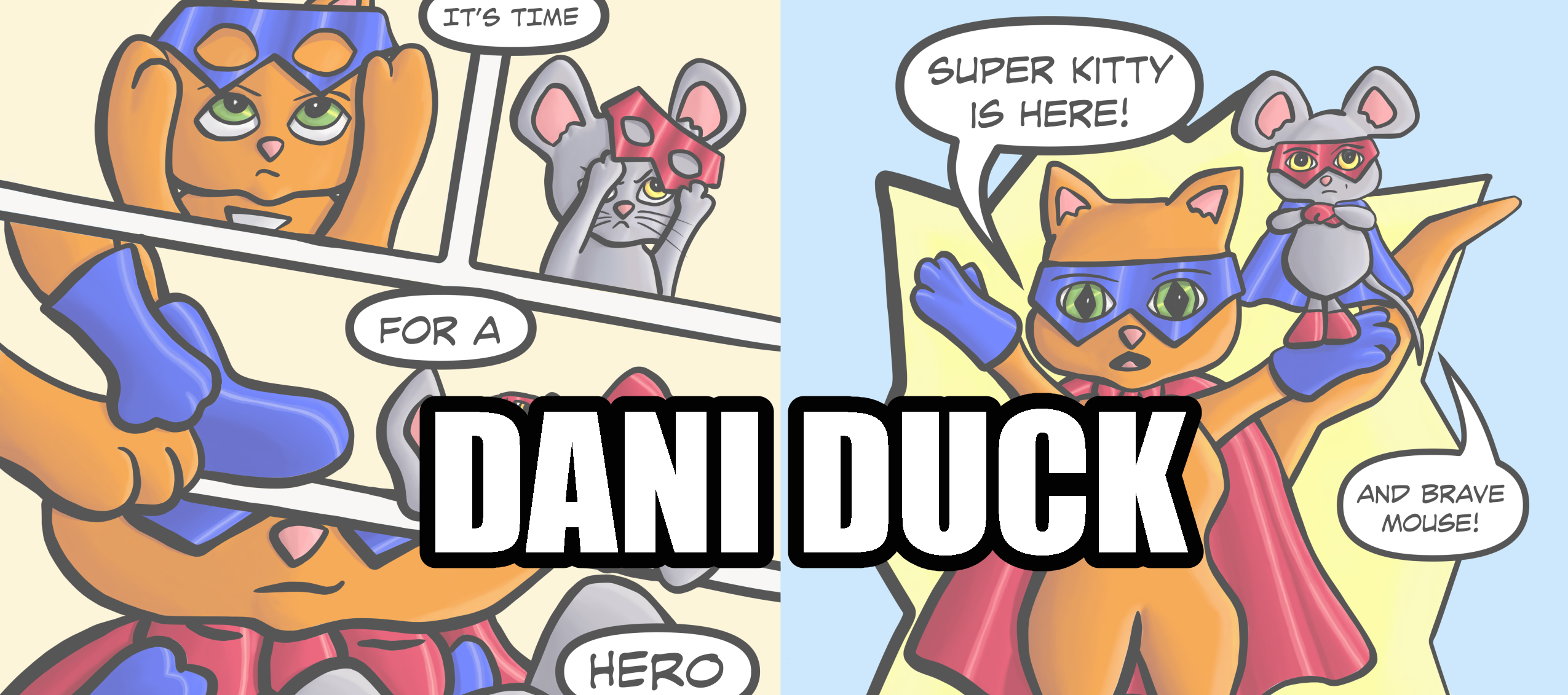-
Emotions and Poses
September 12, 2019 /Emotions
Due to a problem with my website I’ve had to cut out the book review for this week! I’ve got a great book for next week. This is from pages 12-13 of your book
What you’ll need for this project:
Pencils and paper, a mirror.
Other helpful things: camera or internet search
I did a quick video for you today. This is all about emotions. I drew a bunch of circles before starting this video and then made faces into my phone. This can be done on a sheet of paper.
Try making some faces of your own. After you are done try applying them to your own characters. This video has been sped up. Unfortunately there is no sound.
If you haven’t signed up for Smart Dummies you can do so here: http://ngi.c96.myftpupload.com/register-for-smart-dummies-2019/
Poses
This part of the process is going to take a bit of research! First off take photos of someone who’ll pose for you, take pictures of yourself or look for poses on the internet. You can even get a video of people dancing and pause to draw beans from that! Look for poses you might use in your story. You might even find some poses you didn’t know you needed!
If you haven’t already look at this video so you can understand the bean method of drawing this video is from Proko: https://www.proko.com/the-bean/#.XXqiL9KJKUl
Practice drawing some beans of your own. Use the references you found and just practice drawing them in bean format. Fill up a sheet or two of beans. Once you do that then take your character and draw them in a few of those position not forgetting their facial expression for that pose.
Here are some of character drawing and emotions. The first one is of a character I did last year. He’s very cartoony and doesn’t have arms to express himself. It can be harder to express certain emotions with simple characters!
The second is a drawing I have yet to finish. It’s something I’ve just left too long so I would probably go back in and redraw if I wanted to use it for an illustration. Either way it’s good practice!
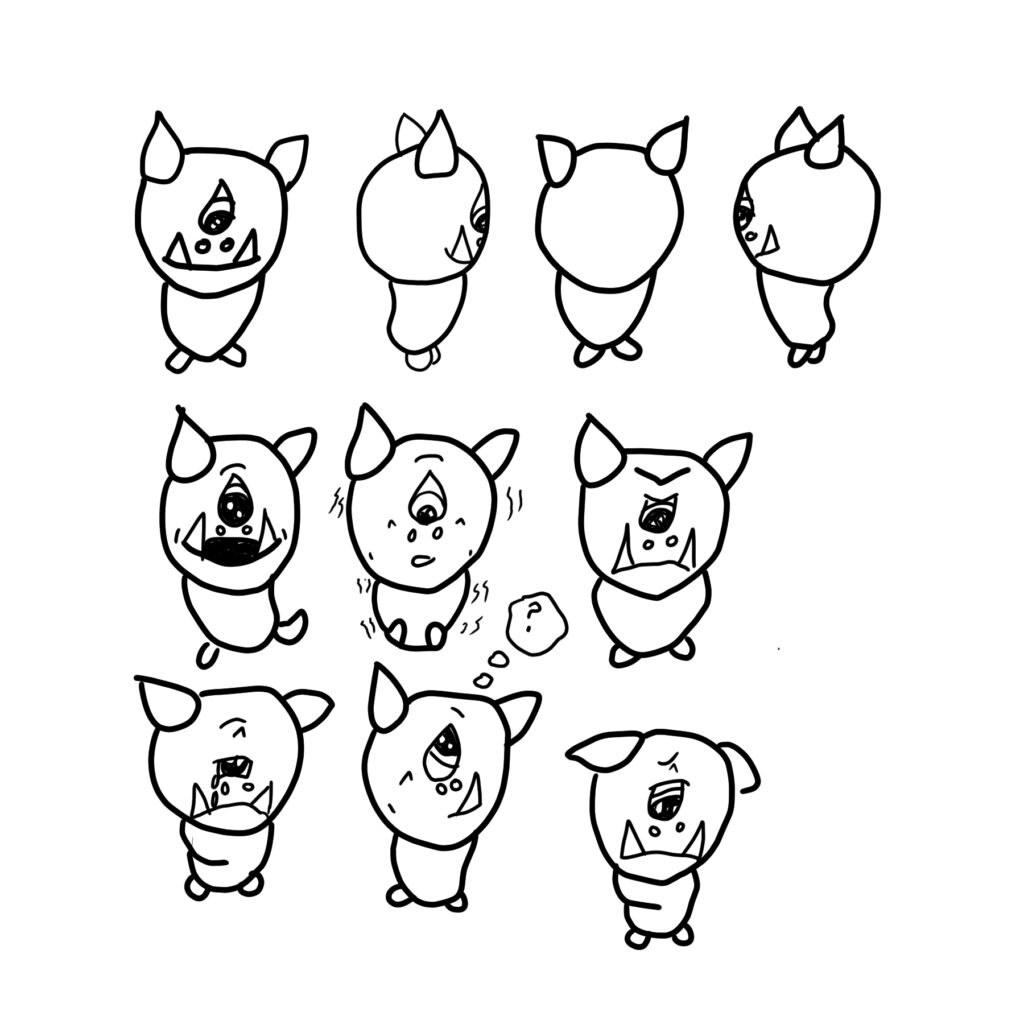
Example of a character in a bunch of diffrent poses. 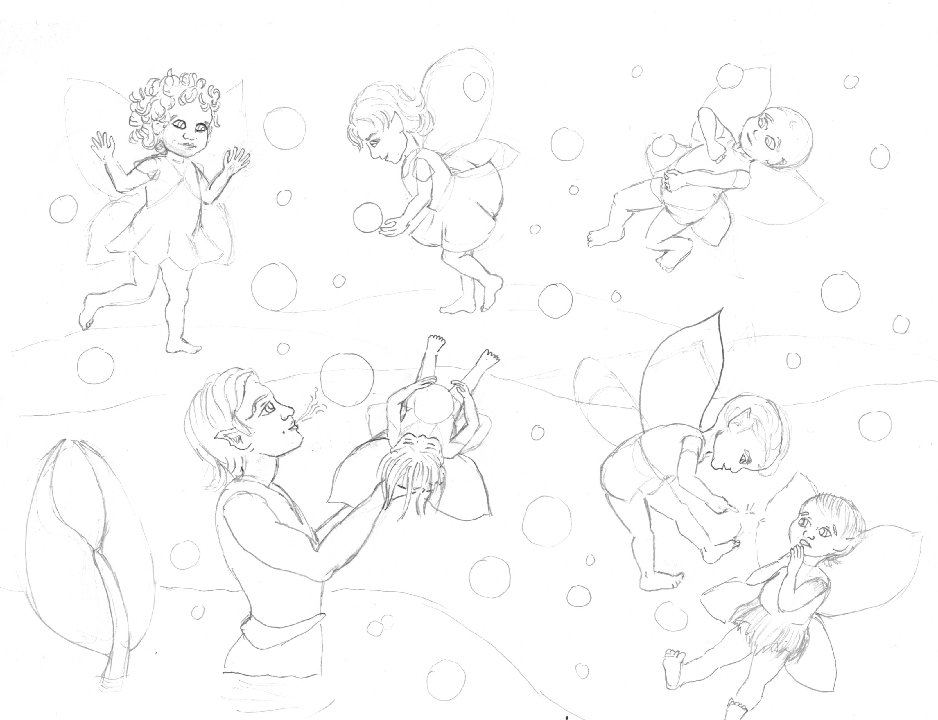
Fairy babies in different positions. -
Character Turnarounds
September 9, 2019 /A character turnaround is a way to get to know your character from all angles. This is the information you’ll need to draw your character the same way every time! Even though you make these your character may evolve while you are creating your book and that’s okay, too!
Things you might need:
Paper, Pencil and likely a ruler. Tracing paper or a light box is optional. Possibly a right angle ruler.Or a digital photo/illustration program. Must be able to work in transparent layers and have guidelines (which is most digital programs).
If you have not signed up for Smart Dummies this year you can do so here: http://ngi.c96.myftpupload.com/register-for-smart-dummies-2019/
Full Character Drawings
In your booklet on pages 10 -11 you’ll see some lined paper. I find this as the easiest way for me to plot out my character. Especially the easiest way to execute the Turnaround. The top is a full character turnaround and the bottom is a face.
When I’m doing character drawings I generally make the face large and the I like making eyes be big enough to fit on a line. It makes it easiest for me to figure out where everything should be. It’s really nice to be able to know which line the eyes, mouth and nose should rest. It’s really easy to get the character’s side, 3/4th or front view off because visually it will look okay, but if you use a ruler things will be way off.
There are some artists who prefer to use graph paper, and that’s not wrong! It’s just not the way I do it. I find the vertical lines throw me off, but they are great for making sure the width of everything is the same throughout the drawing.
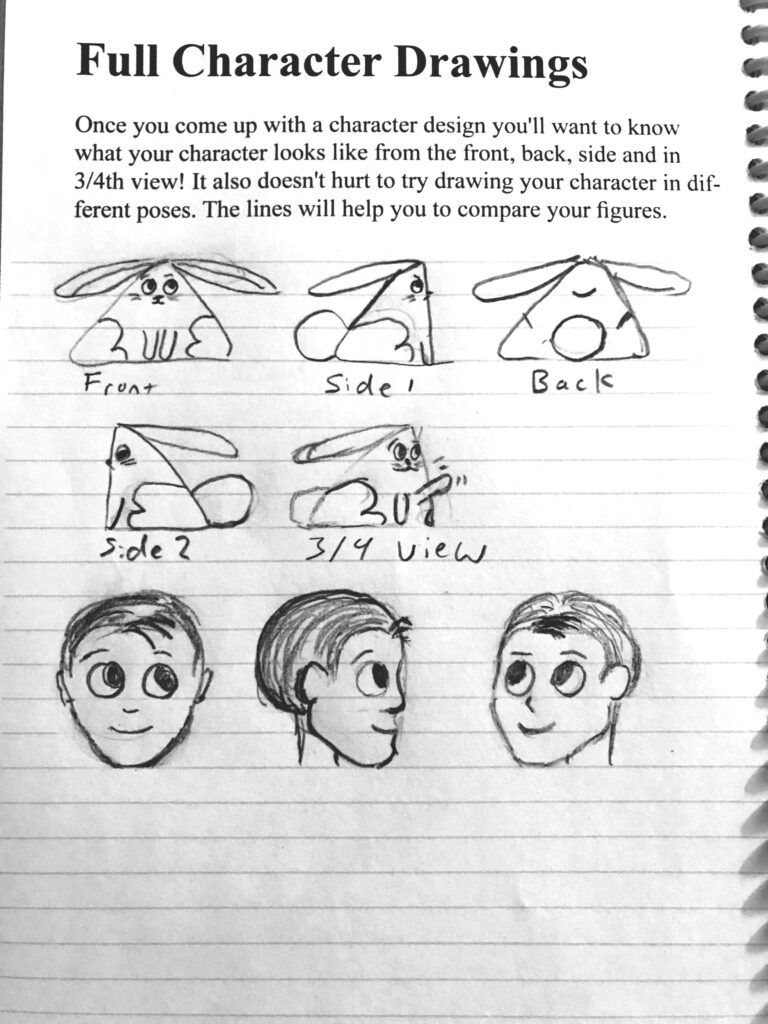
Some turnarounds for characters. Face is front side and 3/4th view. 
I started out with a lot of scribbles and a little bit of an idea of what I was going to create for my portfolio. It was going to be a comic style illustration. I had basic ideas for character design before I worked on some thumbnails. Most of the story I worked on in the left hand side will likely never be in an illustration. Sometimes it helps to work on what happens before a scene, even if that work isn’t seen by other people.
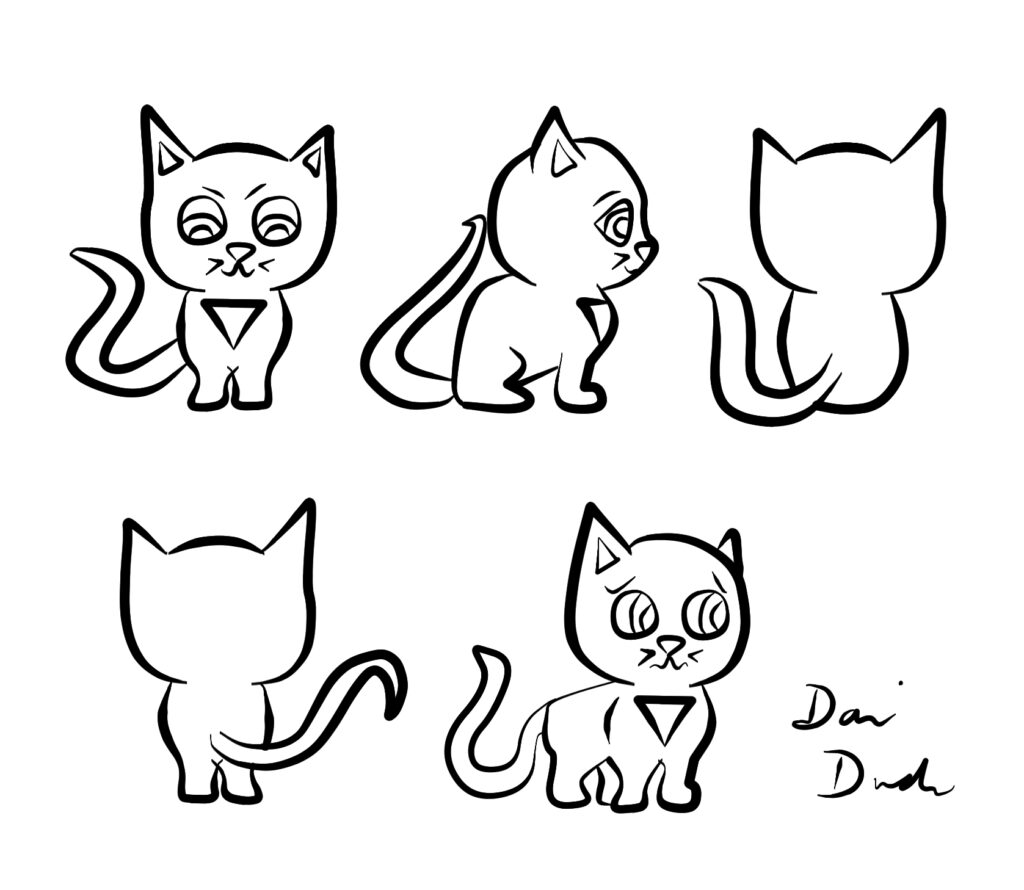
These are the characters I started with. Just a kitty and a girl. I liked the kitty, but the girl I didn’t really like. She felt too old for the story I wanted to write. She also was quite plain. I added some ears later to make her a bear character. I had a friend who asked if she was a giant mouse. She wasn’t, but I thought it was more fun for her to be a giant mouse taking care of a kitten, So things were changed!
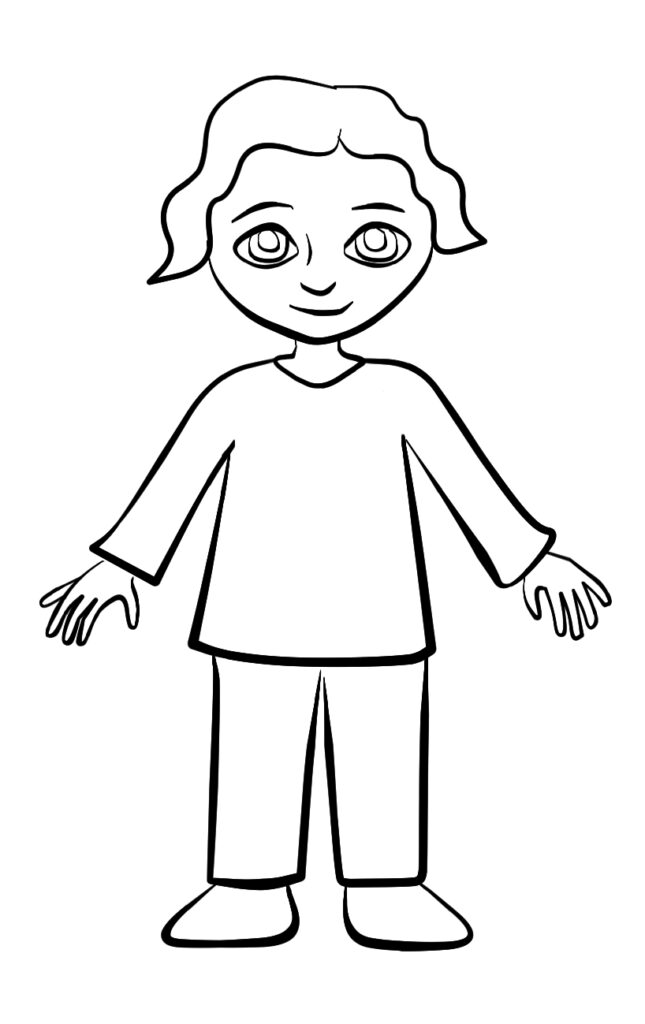
Tracing Paper

One thing I adore about using Clip Studio Paint (and all other digital programs) is the ability to to make a layer more transparent. This allows you to draw your character with a light table effect. You can make sure that your character is similar from all angles! Her eyes nose and mouth all line up and the width of the character stays the same throughout.
If you are working traditionally I highly suggest a light table or tracing paper to create your images. This will allow you to make sure your character looks alike in all their poses.
Guidelines Digital and Traditional
Digital: If your digital program has a ruler, then it probably has the ability to make guidelines. Just right click on the ruler, while you are holding the right button drag the line to where you want it, and then let go of the button. You can change where the line is with an arrow button This can vary from program to program.
I started this drawing with putting lines around the feet head and hands. I can also check the hem of her pants and all the facial features with the guidelines. They can get to be too much while drawing, so there is always a place in your program to turn these off.
Traditional: If you are drawing a character traditionally you almost have to draw in all the lines. I said before that I minimize this by using lined paper. This helps a lot, but there is likely something else that I can’t quite line up that way. If you have a right angle ruler you can put a ruler vertically along the right or left edge of the paper (preferably the red line on lined paper) and draw a horizontal line across the paper.
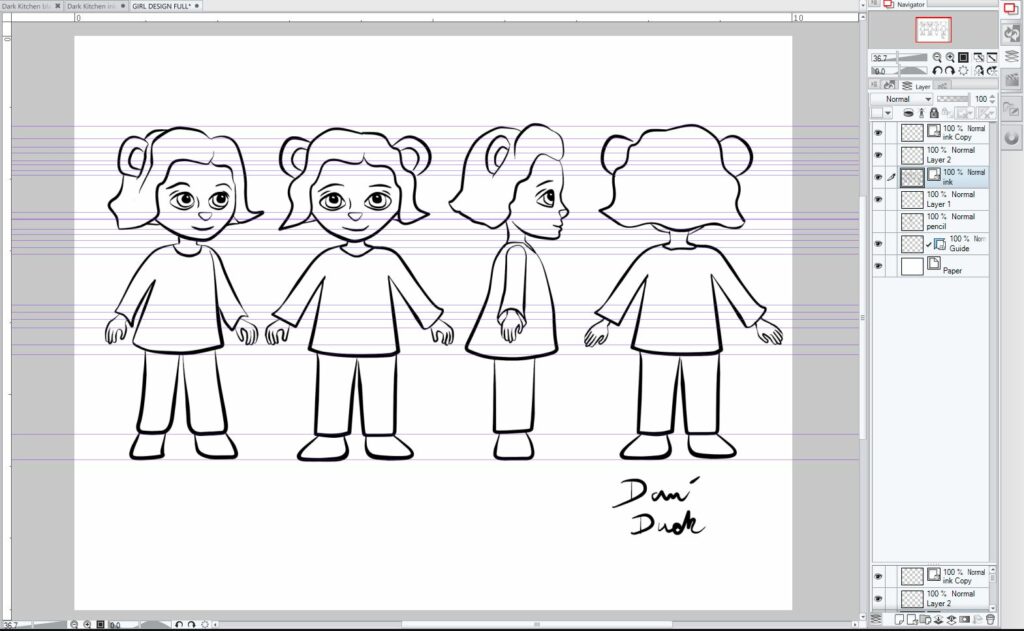

Alternatively you can use a ruler to measure out where each new line goes. This takes a lot of dots and line drawing. It’s frustrating and I hate it, but use it often.
The third option is to just eyeball the whole thing on lined or graph paper. This option is great for all us stubborn people out there. It’s maybe not the best option, but it’s still an option.
The Best Laid Plans

Sometimes even the best laid plans go awry! Neither character here is what I expected them to be, but it’s closer to my final drawing than any of the previous drafts. I’ve made my cat’s head much more rounded and the girl’s features are much more animal like. Even though I worked on these characters several times the characters kept changing in the drawings. I had just finished working on a cat story and the characters in the dummy were exactly like the characters I designed for the dummy.
Ideally, you’ll come up with a character design that you’ll just use in your drawings. Ideally, your whole story wont change while you are working on it. I do hope things wont change for you, but if they do accept the changes and have fun with your art!
If there is anything you need explained further let me know! I could possibly do a video if there are people who would like to see it!
-
Simple Character Bodies
September 5, 2019 /Here are some ideas for your character’s bodies! I took one head and tried it on several different bodies. Copying and pasting a head over and over helps with coming up with a body. If I had to pick one, I’d probably go with the one in the upper right corner.
Don’t worry if none of these appeal to you. I’ve got some links with some wonderful tutorials that will help you further your art!

Different bodies for my lion head. Luis Escobar has some wonderful tips for making the perfect character body: http://www.thedrawingwebsite.com/2017/06/07/cartoon-body-formulas/
Proko has some great tutorials for the bean method of drawing. If you can draw a bean (or something like it) then you can draw a body! https://www.youtube.com/watch?v=0660Fuih7qo
Drawing the Head and Figure by Jack Hamm: https://www.penguinrandomhouse.com/books/272012/drawing-the-head-and-figure-by-jack-hamm/9780399507915/ (This book is generally under $17
Andrew Loomis Figure Drawing for All it’s Worth hosted by archive.org: https://archive.org/details/Andrew_Loomis_Figure_Draw
-
Simple Character Design
September 3, 2019 /Are you ready for character design? Just grab some paper and a pencil (or have your computer program on standby and let’s get sketching! The video shows how I might do a page to figure out a character. There is lots of different techniques.
Full Video
Quick Video (no sound)
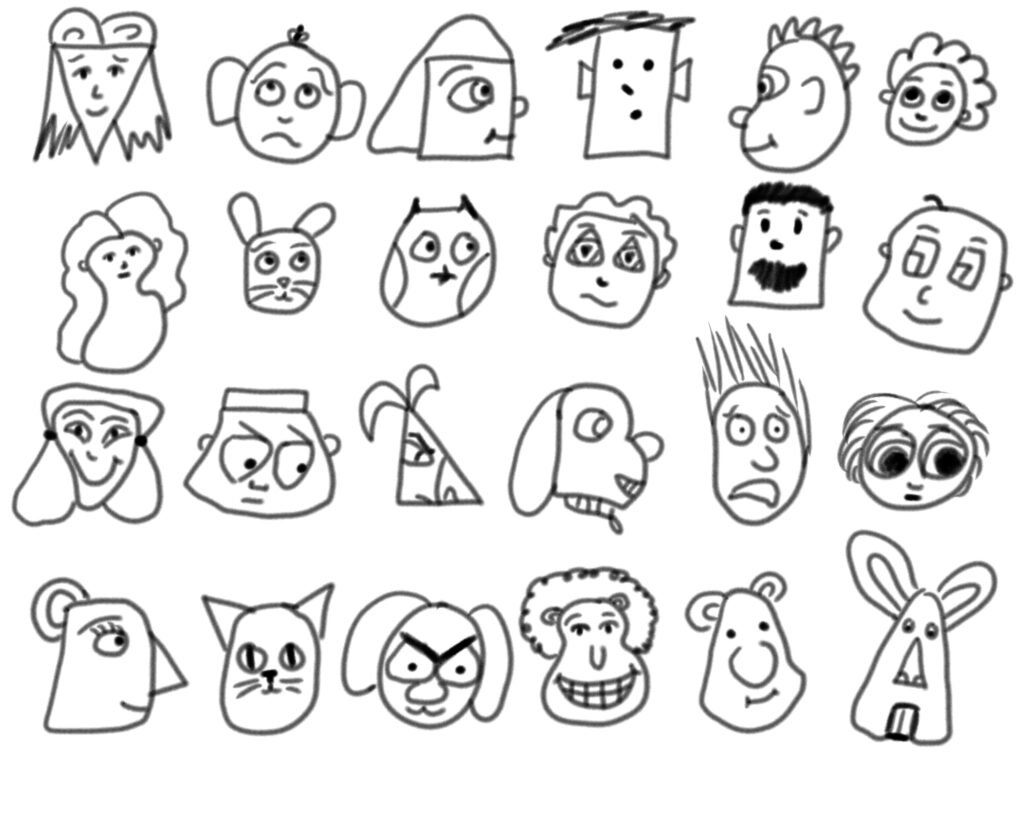
Images I drew for the Smart Dummies video see link above. -
Smart Dummies Week 1: Character Design
September 1, 2019 /If you have not signed up for Smart Dummies yet go here: http://ngi.c96.myftpupload.com/register-for-smart-dummies-2019/ You can sign up, pick up the booklet and badge and find out everything you need to know about the event!
Smart Dummies Schedule Week 1
Sunday – Smart Dummies Week 1 Schedule
Monday – Many of you are celebrating Labor Day today so enjoy your day!
Tuesday – Simple Character Designing (Faces) – Read to page 9
Thursday – Simple Character Bodies
Friday – Book Blog
Sunday – Smart Dummies Week 2 schedule
If you have already worked on any of the above and wish to move on feel free to work ahead. There is a Smart Dummies Regular schedule and a Smart Dummies adjusted schedule on page 4 of the booklet! You can get the booklet here: http://ngi.c96.myftpupload.com/register-for-smart-dummies-2019/
Supplies
Suggested Supplies:
Pencils
Pencil Sharpener
Printer Paper
Smart Dummies Downloadable Booklet
You can use a mechanical pencil, but I’ve had them break so often on me that I try not to rely on these entirely. If you don’t have easy access to printer paper you can use lined paper or a sketchbook for sketching. Printer paper is ideal because you will need white paper to do your final sketching. It’s also easier to scan later.
If you plan on using the computer for your art I still suggest starting on paper. You’ll be able to connect with your story more if you start with paper. I will be talking more about programs and apps later.
Smart Dummies Full Schedule
Please note that Smart Dummies will be running longer than a month this year. That way you have more time for creating your dummy! This schedule is subject to change.
Week 1 (Sept 1st) – Basic Character Design
Week 2 (Sept 8th) – Advanced Character Design
Week 3 (Sept 15th) – Page Planning/Drawing
Weeks 4 & 5 (Sept 22th) – Dummy Drawing
Weeks 7 & 8 (October 13th) – Finals
Week 9 (last week in October) – Submissions
